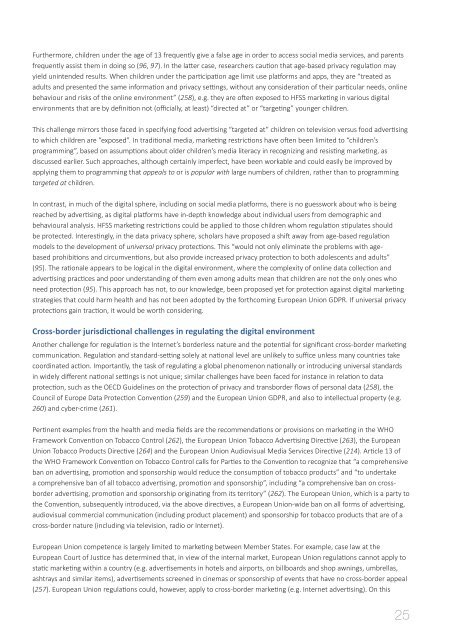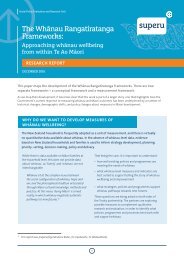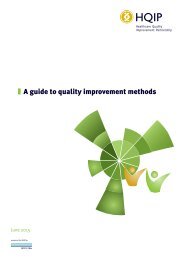2fyY1Py
2fyY1Py
2fyY1Py
You also want an ePaper? Increase the reach of your titles
YUMPU automatically turns print PDFs into web optimized ePapers that Google loves.
Furthermore, children under the age of 13 frequently give a false age in order to access social media services, and parents<br />
frequently assist them in doing so (96, 97). In the latter case, researchers caution that age-based privacy regulation may<br />
yield unintended results. When children under the participation age limit use platforms and apps, they are “treated as<br />
adults and presented the same information and privacy settings, without any consideration of their particular needs, online<br />
behaviour and risks of the online environment” (258), e.g. they are often exposed to HFSS marketing in various digital<br />
environments that are by definition not (officially, at least) “directed at” or “targeting” younger children.<br />
This challenge mirrors those faced in specifying food advertising “targeted at” children on television versus food advertising<br />
to which children are “exposed”. In traditional media, marketing restrictions have often been limited to “children’s<br />
programming”, based on assumptions about older children’s media literacy in recognizing and resisting marketing, as<br />
discussed earlier. Such approaches, although certainly imperfect, have been workable and could easily be improved by<br />
applying them to programming that appeals to or is popular with large numbers of children, rather than to programming<br />
targeted at children.<br />
In contrast, in much of the digital sphere, including on social media platforms, there is no guesswork about who is being<br />
reached by advertising, as digital platforms have in-depth knowledge about individual users from demographic and<br />
behavioural analysis. HFSS marketing restrictions could be applied to those children whom regulation stipulates should<br />
be protected. Interestingly, in the data privacy sphere, scholars have proposed a shift away from age-based regulation<br />
models to the development of universal privacy protections. This “would not only eliminate the problems with agebased<br />
prohibitions and circumventions, but also provide increased privacy protection to both adolescents and adults”<br />
(95). The rationale appears to be logical in the digital environment, where the complexity of online data collection and<br />
advertising practices and poor understanding of them even among adults mean that children are not the only ones who<br />
need protection (95). This approach has not, to our knowledge, been proposed yet for protection against digital marketing<br />
strategies that could harm health and has not been adopted by the forthcoming European Union GDPR. If universal privacy<br />
protections gain traction, it would be worth considering.<br />
Cross-border jurisdictional challenges in regulating the digital environment<br />
Another challenge for regulation is the Internet’s borderless nature and the potential for significant cross-border marketing<br />
communication. Regulation and standard-setting solely at national level are unlikely to suffice unless many countries take<br />
coordinated action. Importantly, the task of regulating a global phenomenon nationally or introducing universal standards<br />
in widely different national settings is not unique; similar challenges have been faced for instance in relation to data<br />
protection, such as the OECD Guidelines on the protection of privacy and transborder flows of personal data (258), the<br />
Council of Europe Data Protection Convention (259) and the European Union GDPR, and also to intellectual property (e.g.<br />
260) and cyber-crime (261).<br />
Pertinent examples from the health and media fields are the recommendations or provisions on marketing in the WHO<br />
Framework Convention on Tobacco Control (262), the European Union Tobacco Advertising Directive (263), the European<br />
Union Tobacco Products Directive (264) and the European Union Audiovisual Media Services Directive (214). Article 13 of<br />
the WHO Framework Convention on Tobacco Control calls for Parties to the Convention to recognize that “a comprehensive<br />
ban on advertising, promotion and sponsorship would reduce the consumption of tobacco products” and “to undertake<br />
a comprehensive ban of all tobacco advertising, promotion and sponsorship”, including “a comprehensive ban on crossborder<br />
advertising, promotion and sponsorship originating from its territory” (262). The European Union, which is a party to<br />
the Convention, subsequently introduced, via the above directives, a European Union-wide ban on all forms of advertising,<br />
audiovisual commercial communication (including product placement) and sponsorship for tobacco products that are of a<br />
cross-border nature (including via television, radio or Internet).<br />
European Union competence is largely limited to marketing between Member States. For example, case law at the<br />
European Court of Justice has determined that, in view of the internal market, European Union regulations cannot apply to<br />
static marketing within a country (e.g. advertisements in hotels and airports, on billboards and shop awnings, umbrellas,<br />
ashtrays and similar items), advertisements screened in cinemas or sponsorship of events that have no cross-border appeal<br />
(257). European Union regulations could, however, apply to cross-border marketing (e.g. Internet advertising). On this<br />
25






